
The Majestic Ruins of Great Zimbabwe National Monument
Discover the ancient stone ruins of Great Zimbabwe National Monument – a UNESCO World Heritage site showcasing the rich heritage and engineering prowess of the Shona civilization.
The Great Zimbabwe National Monument is an awe-inspiring archaeological site located in the heart of Zimbabwe. This UNESCO World Heritage site stands as a testament to the rich cultural heritage and impressive engineering skills of the Shona civilization that flourished between the 11th and 15th centuries. As you explore the stone ruins, you will be mesmerized by the Great Enclosure, the largest ancient structure in sub-Saharan Africa. With its towering walls and intricate stonework, it offers a glimpse into the grandeur of a bygone era. The Hill Complex, perched on a rocky hilltop, provides stunning panoramic views of the surrounding landscapes and is believed to have been a royal city. The Great Zimbabwe National Monument is not only a historical treasure but also a place of natural beauty. The lush surroundings and diverse wildlife add to the allure of this remarkable site. Whether you are a history buff, a nature lover, or simply seeking a unique adventure, the Great Zimbabwe National Monument promises an unforgettable experience.
Local tips in Great Zimbabwe National Monument
- Wear comfortable walking shoes as the terrain can be uneven.
- Visit early in the morning or late afternoon to avoid the midday heat.
- Hire a local guide for a more informative and enriching experience.
- Carry plenty of water and sunscreen to stay hydrated and protected from the sun.
- Take your time to appreciate the panoramic views from the Hill Complex.
The Majestic Ruins of Great Zimbabwe National Monument
The Great Zimbabwe National Monument is an awe-inspiring archaeological site located in the heart of Zimbabwe. This UNESCO World Heritage site stands as a testament to the rich cultural heritage and impressive engineering skills of the Shona civilization that flourished between the 11th and 15th centuries. As you explore the stone ruins, you will be mesmerized by the Great Enclosure, the largest ancient structure in sub-Saharan Africa. With its towering walls and intricate stonework, it offers a glimpse into the grandeur of a bygone era. The Hill Complex, perched on a rocky hilltop, provides stunning panoramic views of the surrounding landscapes and is believed to have been a royal city. The Great Zimbabwe National Monument is not only a historical treasure but also a place of natural beauty. The lush surroundings and diverse wildlife add to the allure of this remarkable site. Whether you are a history buff, a nature lover, or simply seeking a unique adventure, the Great Zimbabwe National Monument promises an unforgettable experience.
When is the best time to go to Great Zimbabwe National Monument?
Iconic landmarks you can’t miss
Victoria Falls
Experience the breathtaking beauty and exhilarating adventures at Victoria Falls, one of the world's most magnificent natural wonders.

Matobo National Park
Explore Matobo National Park: A UNESCO World Heritage Site with stunning landscapes, rich wildlife, and ancient rock art in Zimbabwe.

Worlds View
Experience the breathtaking landscapes and rich cultural heritage at World's View in Nyanga, a captivating tourist attraction in Zimbabwe.

Zimbabwe Museum of Human Sciences
Explore the Zimbabwe Museum of Human Sciences for a captivating journey through the history and evolution of Zimbabwean culture and humanity.

Natural History Museum of Zimbabwe
Explore Zimbabwe's natural heritage at the Natural History Museum of Zimbabwe, featuring fascinating exhibits on wildlife, geology, and culture.

Zambezi National Park
Explore Zambezi National Park: A Natural Wonderland of Wildlife, Scenic Views, and the Majestic Zambezi River.

Grave of Cecil John Rhodes
Discover the historical significance and natural beauty at the Grave of Cecil John Rhodes in the breathtaking Matopos Hills of Zimbabwe.

National Heroes' Acre
Discover the National Heroes' Acre in Harare, a powerful tribute to Zimbabwe's liberation heroes and a rich historical landmark for tourists.

Home and office deco
Explore the artistic heart of Zimbabwe at Home and Office Deco, Harare's premier destination for unique decor and cultural heritage.

Khami Ruins
Explore Khami Ruins, a UNESCO World Heritage Site in Zimbabwe, showcasing ancient architecture and rich cultural heritage.

Victoria Falls National Park
Experience the breathtaking beauty and adventure of Victoria Falls National Park, a UNESCO World Heritage site, where nature and thrill await.

Epworth Balancing Rocks
Explore the stunning Epworth Balancing Rocks, a natural wonder in Zimbabwe, where gravity-defying rock formations create breathtaking landscapes.

Birchenough Bridge
Experience the breathtaking beauty and rich history of Birchenough Bridge, an iconic Zimbabwean landmark that connects communities across the stunning Save River.
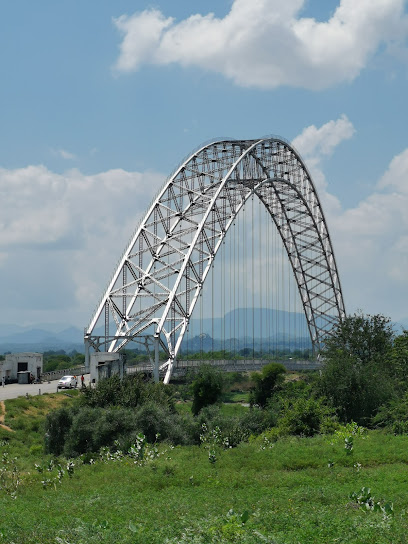
Great Enclosure
Unveil the architectural brilliance and rich history of the Great Enclosure in Zimbabwe, a UNESCO World Heritage Site waiting to be explored.

National Museums and Monuments of Zimbabwe
Uncover the depths of Zimbabwe's history and culture at the National Museums and Monuments, a treasure trove for every curious traveler.
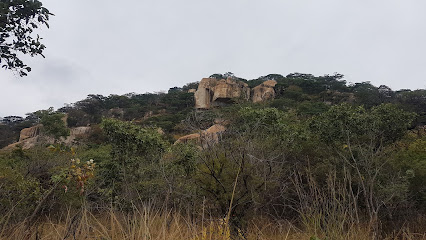
Unmissable attractions to see
Victoria Falls
Experience the breathtaking beauty and thrilling adventures of Victoria Falls, a UNESCO World Heritage Site and one of the Seven Natural Wonders of the World.

Chinhoyi Caves
Discover the stunning Chinhoyi Caves, a national park in Zimbabwe known for its breathtaking limestone formations and serene blue pools, a true natural wonder.
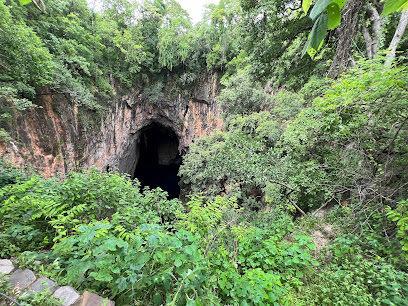
National Gallery of Zimbabwe
Explore the vibrant artistic heritage of Zimbabwe at the National Gallery, where contemporary and traditional art intertwine in a cultural celebration.

Antelope Park
Discover the magic of wildlife at Antelope Park, a premier safari park in Zimbabwe, perfect for adventures and unforgettable encounters.

Hillside Dams Conservancy Office
Discover the natural beauty and tranquility of Hillside Dams Conservancy in Bulawayo, a perfect destination for hiking, wildlife watching, and outdoor relaxation.

Matobo National Park
Explore Matobo National Park, a UNESCO World Heritage site known for its breathtaking landscapes, diverse wildlife, and rich cultural heritage.

Worlds View
Discover the breathtaking beauty of World's View in Nyanga, Zimbabwe – a must-visit tourist attraction for nature lovers and adventurers alike.

Zimbabwe Museum of Human Sciences
Explore the captivating history and cultural heritage of Zimbabwe at the Zimbabwe Museum of Human Sciences, a premier destination for history enthusiasts.
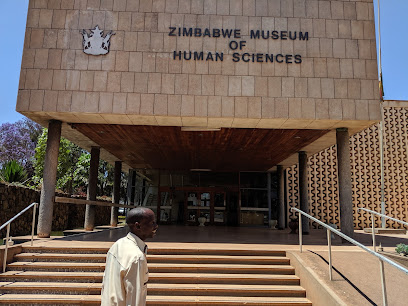
Victoria Falls Crocodile Park
Explore the fascinating world of crocodiles and wildlife conservation at Victoria Falls Crocodile Park, a must-visit nature preserve.

Zambezi National Park
Experience the wild heart of Africa at Zambezi National Park, where stunning landscapes and diverse wildlife await every visitor.

Nyangombe Falls
Experience the beauty and serenity of Nyangombe Falls, a hidden gem in Zimbabwe's Nyanga region, perfect for nature lovers and adventure seekers.
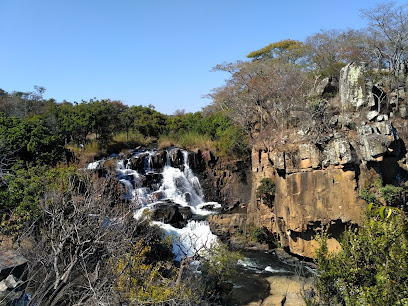
Mutare Museum
Uncover the rich tapestry of Mutare's history at the Mutare Museum, where culture and heritage come alive in captivating exhibits.

Domboshawa
Discover the breathtaking landscapes and rich history of Domboshawa National Park, a hidden gem in Zimbabwe's natural beauty.

Mana Pools National Park
Explore the breathtaking landscapes and wildlife of Mana Pools National Park, a premier destination for nature lovers and adventure seekers in Zimbabwe.

National Heroes' Acre
Explore the National Heroes' Acre in Harare, a poignant tribute to Zimbabwe's brave leaders and a must-visit for history enthusiasts.
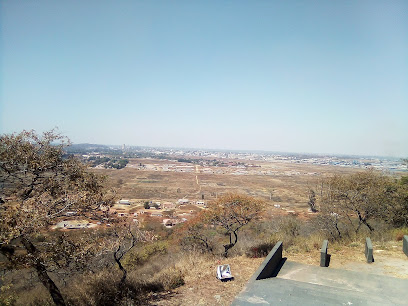
Essential places to dine
Gavas Restaurant
Experience authentic Zimbabwean cuisine at Gavas Restaurant in Harare's Belgravia Sports Club—where flavor meets culture.

Cafe Nush Avondale
Experience the vibrant culinary scene at Cafe Nush Avondale – where local flavors meet international flair in Harare's heart.
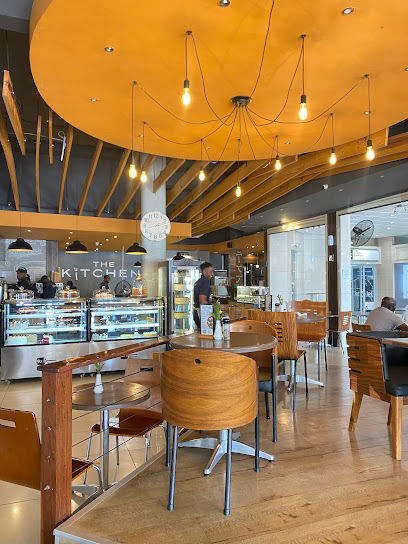
The Lookout Cafe - Wild Horizons
Experience breathtaking views and delicious cuisine at The Lookout Cafe in Batoka Gorge near Victoria Falls.

The Boma - Dinner & Drum Show
Immerse yourself in Zimbabwean culture at The Boma - Dinner & Drum Show: an unforgettable night of food and entertainment in Victoria Falls.

Casa Mia Ristorante Pizzeria
Discover the authentic flavors of Italy at Casa Mia Ristorante Pizzeria in Harare - where every meal is a celebration of taste.

Victoria 22 Restaurant
Experience culinary excellence at Victoria 22 Restaurant in Harare, where local flavors meet international cuisine in an elegant setting.

Chang Thai Restaurant
Discover authentic Thai flavors at Chang Thai Restaurant in Harare – a culinary escape that delights every palate.

Alo Alo Restaurant
Discover the rich flavors of Zimbabwe at Alo Alo Restaurant in Harare - where local cuisine meets warm hospitality.

Organikks Ndizvo
Savor authentic Zimbabwean cuisine blended with global flavors at Organikks Ndizvo in Harare.

Amanzi Restaurant @ Amanzi Lodge
Discover culinary delights at Amanzi Restaurant within Amanzi Lodge—where local flavors meet exquisite dining in Harare.

Ocean Basket Sam Levy
Discover the best seafood dining experience at Ocean Basket Sam Levy in Harare - where Mediterranean flavors meet sushi delights.

The Village Greek
Discover the vibrant flavors of Greece at The Village Greek in Harare's Sam Levy's Village – where every dish tells a story.

Sabai Thai
Discover authentic Thai cuisine at Sabai Thai in Harare - where every dish tells a story filled with flavor.

Kapoto
Discover authentic Zimbabwean cuisine at Kapoto in Harare – a culinary gem blending tradition with taste.

Café Pistachio
Discover delightful breakfasts and vibrant local flavors at Café Pistachio in Harare – your perfect start to exploring Zimbabwe's capital.

Markets, malls and hidden boutiques
Sam Levy's Village
Discover the vibrant shopping and dining experience at Sam Levy's Village, a must-visit destination in Harare, Zimbabwe.

National Gallery of Zimbabwe
Discover the vibrant art scene of Zimbabwe at the National Gallery, showcasing local and international masterpieces in Harare.

Great Zimbabwe National Monument
Discover the ancient wonders of Great Zimbabwe National Monument, a UNESCO World Heritage site that showcases the rich cultural heritage of Africa.

National Gallery in Bulawayo
Discover the heart of Zimbabwean art at the National Gallery in Bulawayo, showcasing contemporary and traditional masterpieces.
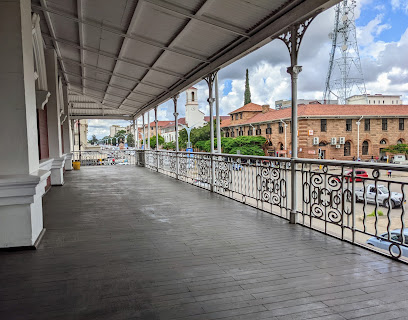
Hillside Dams Conservancy Office
Explore the serene Hillside Dams Conservancy in Bulawayo – a perfect blend of hiking, wildlife, and picturesque landscapes for outdoor enthusiasts.

Matobo National Park
Explore the stunning landscapes and rich cultural heritage of Matobo National Park, a UNESCO World Heritage Site in Zimbabwe.

Great Zimbabwe Hotel
Discover the cultural heritage of Zimbabwe at Great Zimbabwe Hotel, located near the majestic Great Zimbabwe National Monument.

Zimbabwe Museum of Human Sciences
Explore the Zimbabwe Museum of Human Sciences for a captivating journey through the rich cultural and historical tapestry of Zimbabwe.

Natural History Museum of Zimbabwe
Explore Zimbabwe's rich natural history and cultural heritage at the Natural History Museum of Zimbabwe in Bulawayo.

Nesbitt Castle
Experience the enchanting ambiance of Nesbitt Castle, a stunning wedding venue in Bulawayo, offering elegance and history for unforgettable events.

Mana Pools National Park
Discover the natural wonders of Mana Pools National Park, Zimbabwe's premier destination for wildlife enthusiasts and adventurers alike.

Elephant's Walk Shopping & Artist's Village
Experience the vibrant culture and artistic spirit at Elephant's Walk Shopping & Artist's Village in Victoria Falls, Zimbabwe.

Victoria Falls National Park
Discover the breathtaking landscapes and thrilling adventures at Victoria Falls National Park, home to one of the world's natural wonders.

Khami Ruins
Discover the ancient Khami Ruins, a UNESCO World Heritage site in Zimbabwe, showcasing remarkable stone architecture and rich cultural heritage.
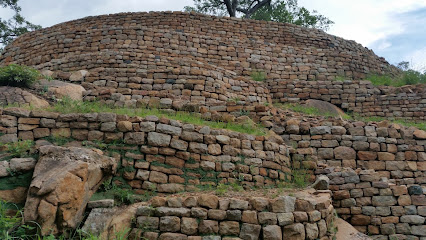
Raintree Venue
Discover Raintree Venue, Harare's premier event space for weddings, conferences, and unforgettable gatherings amidst stunning natural beauty.

Essential bars & hidden hideouts
The Jam Tree
Experience the vibrant flavors and lively atmosphere at The Jam Tree, a top dining destination in Harare offering diverse menus and a unique bar experience.

Great Zimbabwe National Monument
Discover the ancient architectural marvel of Great Zimbabwe National Monument, a UNESCO World Heritage Site rich in history and cultural significance.

Eclipse Sports Bar and Grill(ECLIPSE AFRICAN CUISINE RESTAURANT)
Experience the vibrant taste of African cuisine at Eclipse Sports Bar and Grill in Harare, where delicious food meets lively entertainment.

Great Zimbabwe Hotel
Experience the charm of Zimbabwe at the Great Zimbabwe Hotel, your gateway to history and comfort near the ancient ruins.

Beach house
Experience the vibrant flavors and cozy ambiance of Beach House Restaurant in Harare, a must-visit dining destination for travelers.

Saints 'n' Sinners
Discover the vibrant nightlife and delectable dining at Saints 'n' Sinners, Harare's premier lounge, pub, and restaurant.

Ujiji Bar
Experience the vibrant flavors of Ujiji Bar in Masvingo, where delicious grilled dishes meet warm local hospitality in a lively setting.

Liquids Bar
Discover the vibrant nightlife at Liquids Bar in Masvingo, where music, drinks, and entertainment await your arrival.

Great Zimbabwe Cafe and Curios Shop
Discover authentic Zimbabwean flavors and unique handcrafted souvenirs at Great Zimbabwe Cafe and Curios Shop, a cultural gem in the heart of Zimbabwe.

Local Phrases about Great Zimbabwe National Monument
-
- HelloMhoro
[Mhoro] - GoodbyeChisarai
[Chisarai] - YesEhe
[Ehe] - NoAa
[Aa] - Please/You're welcomeNdatenda
[Ndatenda] - Thank youNdinotenda
[Ndinotenda] - Excuse me/SorrySamaita
[Samaita] - How are you?Uri sei?
[Uri sei?] - Fine. And you?Zvakanaka. Nha?
[Zvakanaka. Nha?] - Do you speak English?Wakarurama here chiIngerezi?
[Wakarurama here chi-Ingerezi?] - I don't understandHandina kuziva
[Handina kuziva]
- HelloMhoro
-
- I'd like to see the menu, pleaseNdoda kudzorera menu, musiye
[Ndoda kudzorera menu, musiye] - I don't eat meatHandinyori nyama
[Handinyori nyama] - Cheers!Shere!
[Shere!] - I would like to pay, pleaseNdoda kushandisa, musiye
[Ndoda kushandisa, musiye]
- I'd like to see the menu, pleaseNdoda kudzorera menu, musiye
-
- Help!Rimuka!
[Rimuka!] - Go away!Tora uone!
[Tora uone!] - Call the Police!Pindai mapurisa!
[Pindai mapurisa!] - Call a doctor!Pindai daktari!
[Pindai daktari!] - I'm lostNdakaparadzwa
[Ndakaparadzwa] - I'm illNdirikukanganwa
[Ndirikukanganwa]
- Help!Rimuka!
-
- I'd like to buy...Ndoda kuita basa...
[Ndoda kuita basa...] - I'm just lookingNdine kusawona chete
[Ndine kusawona chete] - How much is it?Ndiyo marii?
[Ndiyo marii?] - That's too expensiveIyo yakagadzirira zvikuru
[Iyo yakagadzirira zvikuru] - Can you lower the price?Unogona kushandisa mari?
[Unogona kushandisa mari?]
- I'd like to buy...Ndoda kuita basa...
-
- What time is it?Saa inonzi sei?
[Saa inonzi sei?] - It's one o'clockSaa inonzi iri yakabudiswa
[Saa inonzi iri yakabudiswa] - Half past (10)Nete mukati we 10
[Nete mukati we 10] - MorningMangwanani
[Mangwanani] - AfternoonChetechemoyo
[Chetechemoyo] - EveningMugadzane
[Mugadzane] - YesterdayNzira
[Nzira] - TodayNhasi
[Nhasi] - TomorrowMangwana
[Mangwana] - 1Munhu
[Munhu] - 2Miri
[Miri] - 3Maruva
[Maruva] - 4Makumi mashanu
[Makumi mashanu] - 5Makumi matanhatu
[Makumi matanhatu] - 6Makumi matanhatu
[Makumi matanhatu] - 7Makumi matanhatu
[Makumi matanhatu] - 8Makumi matanhatu
[Makumi matanhatu] - 9Makumi matanhatu
[Makumi matanhatu] - 10Makumi matanhatu
[Makumi matanhatu]
- What time is it?Saa inonzi sei?
-
- Where's a/the...?Pamusoro pa...
[Pamusoro pa...] - What's the address?Address inonzi here?
[Address inonzi here?] - Can you show me (on the map)?Unogona kundipa pano (pamapu)?
[Unogona kundipa pano (pamapu)?] - When's the next (bus)?Kana iwe yatongwa here (bhizinesi)?
[Kana iwe yatongwa here (bhizinesi)?] - A ticket (to ....)Ticket (kuna ....)
[Ticket (kuna ....)]
- Where's a/the...?Pamusoro pa...
History of Great Zimbabwe National Monument
-
Great Zimbabwe was built by the ancestral Shona people, with its construction beginning in the 11th century and continuing until the 15th century. The site served as a royal palace for the Zimbabwean monarch and was a major trading center, dealing in gold, ivory, and other goods with traders from as far away as China and Persia.
-
The site is renowned for its sophisticated stone architecture. The most famous structures are the Great Enclosure, the Conical Tower, and the Hill Complex. The walls, some of which are over 11 meters high, were constructed without mortar, showcasing the advanced engineering skills of the Shona people.
-
Great Zimbabwe was a thriving economic hub, strategically located on trade routes that connected the interior of Africa to the coastal trading ports. The city was involved in the trade of gold, copper, iron, and other commodities. Artifacts such as Chinese porcelain and Persian pottery found at the site indicate its extensive trade connections.
-
The city was not only a political and economic center but also held great cultural and religious significance. It is believed that the Hill Complex was a spiritual center where rituals and ceremonies took place. The Shona people still revere the site, and it remains a symbol of their rich cultural heritage.
-
European explorers and colonialists in the 19th and early 20th centuries misattributed the construction of Great Zimbabwe to ancient civilizations such as the Phoenicians or the Queen of Sheba, largely due to racist ideologies that denied the capabilities of indigenous African societies. It wasn't until later that the site was correctly attributed to the Shona people.
-
Significant archaeological excavations began in the early 20th century, revealing a wealth of artifacts and providing insights into the complex's construction, usage, and the life of its inhabitants. These discoveries have helped to piece together the history and importance of Great Zimbabwe.
-
In 1986, Great Zimbabwe was designated a UNESCO World Heritage Site, recognizing its outstanding universal value. The designation has helped to preserve the site and promote its historical and cultural significance on a global stage.
Great Zimbabwe National Monument Essentials
-
Great Zimbabwe National Monument is located near the town of Masvingo in Zimbabwe. The nearest international airport is Harare International Airport, located approximately 300 km north of Masvingo. From Harare, you can take a bus or hire a private car to reach Masvingo, which will take around 4 to 5 hours. Alternatively, there are domestic flights from Harare to Masvingo Airport, followed by a short taxi ride to the monument.
-
In Masvingo, you can hire a taxi or use local minibuses (kombis) to get to Great Zimbabwe National Monument. Renting a car is also a convenient option, especially if you plan to explore beyond the monument. Be sure to agree on the fare in advance when using taxis, as they may not have meters. Additionally, guided tours are available, which often include transportation.
-
The official currency in Zimbabwe is the Zimbabwean Dollar (ZWL), but the US Dollar (USD) is widely accepted. Credit cards are accepted in most hotels, restaurants, and larger shops, but it is advisable to carry cash for smaller establishments and local markets. ATMs are available in Masvingo, though they may have withdrawal limits.
-
Great Zimbabwe National Monument is generally safe for tourists. However, it's advisable to take standard precautions such as avoiding isolated areas after dark and keeping an eye on your belongings. Be cautious in crowded areas and markets. While Masvingo is relatively safe, there have been occasional reports of petty crime targeting tourists. Always stay vigilant and avoid displaying valuables conspicuously.
-
In case of emergency, dial 999 for immediate assistance. Masvingo has a local police station and medical facilities, including Masvingo Provincial Hospital. It is recommended to have travel insurance that covers medical emergencies. For minor health issues, there are pharmacies in Masvingo where you can purchase over-the-counter medications.
-
Fashion: Do dress modestly, especially when visiting the monument and local communities. Avoid wearing revealing clothing. Religion: Do respect local customs and traditions. Some areas of the monument are considered sacred. Public Transport: Do be respectful and offer your seat to elderly passengers. Don't eat or drink on public transport. Greetings: Do greet people with a handshake. A friendly nod or smile is also appreciated. Eating & Drinking: Do try local delicacies and accept food offerings graciously. Don't refuse hospitality, as it is considered impolite.
-
To experience Great Zimbabwe National Monument like a local, visit the nearby Shona villages where you can learn about traditional crafts and culture. Engage with local guides who offer insightful tours and historical narratives. Don't miss the chance to watch a traditional dance performance, often organized for visitors. For a unique experience, visit the monument at sunrise or sunset to enjoy spectacular views and fewer crowds.
Trending Landmarks in Great Zimbabwe National Monument
-
Victoria Falls
-
Matobo National Park
-
Worlds View
-
Zimbabwe Museum of Human Sciences
-
Natural History Museum of Zimbabwe
-
Zambezi National Park
-
Grave of Cecil John Rhodes
-
National Heroes' Acre
-
Home and office deco
-
Khami Ruins
-
Victoria Falls National Park
-
Epworth Balancing Rocks
-
Birchenough Bridge
-
Great Enclosure
-
National Museums and Monuments of Zimbabwe
Nearby Cities to Great Zimbabwe National Monument
-
Things To Do in Gweru
-
Things To Do in Mutare
-
Things To Do in Harare
-
Things To Do in Nyanga
-
Things To Do in Chinhoyi
-
Things To Do in Francistown
-
Things To Do in Selebi-Phikwe
-
Things To Do in Polokwane
-
Things To Do in Palapye
-
Things To Do in Kariba
-
Things To Do in Vilanculos
-
Things To Do in Serowe
-
Things To Do in Hwange
-
Things To Do in Mahalapye
-
Things To Do in Nelspruit








